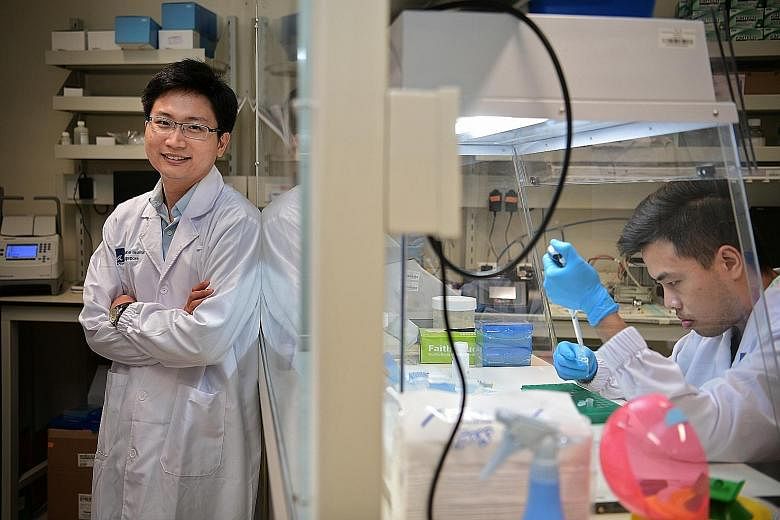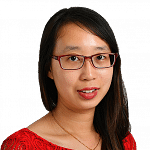His time as a graduate student at Stanford University ended up changing Dr Tan Yann Chong's life in more ways than one.
Working with his lab's director, the Agency for Science, Technology and Research (A*Star) scholarship holder developed a new method of charting human antibodies, which the two men spun off into biotechnology start-up Atreca in 2012.
It has raised more than US$56 million (S$78.4 million) through investments from sources such as the Bill & Melinda Gates Foundation.
Dr Tan even managed to score personally in his time at the lab. He had daily lunches with a student working in a lab just across the corridor from his - Dr Zeng Ruizhu, 34, a fellow A*Star scientist, who is now his wife. The couple, who are both Singaporean, have two children who are turning two and four.
At Atreca, Dr Tan, 33, works on finding cures for cancer by examining the immune response of patients who have shown progress in their fight against the disease, and studying how to produce their antibodies as drugs.
Clinical trials are still a few years away, he said. But a big help is Atreca's proprietary immune repertoire capture technology, which Dr Tan helped to develop during his time as a graduate student.
It lets researchers map the antibodies in a blood sample in a matter of days, as opposed to a week or two with conventional methods - "something that has never been done with the sort of fidelity and accuracy we are doing", as Dr Tan put it.
His method helps to quickly identify the cells and genes responsible for certain immune responses.
"When we send it for sequencing, what we can do is, we can tie all the sequences back to the original cell it came from," he explained. "So, imagine if you have a lot of cells - if you smooshed them up and get the nucleic acids from there - you've got to do it in such a way that you can figure out how the nucleic acid came from the original cell."
Although Stanford owns the underlying intellectual property, Atreca holds an exclusive licence for its use. This is not the only tie-up that Dr Tan has secured in developing his company.
Last December, Atreca and A*Star's Genome Institute of Singapore (GIS) announced they would set up a joint lab at the GIS facility in Biopolis. The lab is headed by Dr Tan, who is based in Singapore and who also advises GIS on innovation and commercialisation issues.
His five-man team here focuses on technical improvements to their research methods, while the more than 50 employees at Atreca's headquarters in Redwood City, near Stanford's California campus, work on drug discovery and development.
Dr Tan credits founding Atreca to a combination of grit and scientific passion, especially as he had no prior business experience. The son of a retired shipyard production manager and a food-stall assistant said of his parents: "They are definitely very supportive and happy I'm doing something I enjoy."
He told The Straits Times that he benefited from the Silicon Valley ethos of his graduate mentor, Associate Professor of Medicine William Robinson, 49. "The idea was great, people were interested in it and my (professor) managed to find some like-minded folks," he said. "It definitely was a steep learning curve."
Dr Tan said he has enjoyed learning about life sciences since he was young, but discovered the joy of immunology only when he took higher-level classes in his final year as a biology undergraduate at Duke University."I really enjoy... the technical aspect of things," he said.
His time working under Prof Robinson - whose speciality is autoimmune conditions, when the immune system turns against the rest of the body - led him to think about how that harmful trait can be deployed to make the immune system attack tumours.
Prof Robinson, now a colleague at Atreca, said Dr Tan's contribution to the immune repertoire capture method was instrumental in getting the start-up off the ground.
"Yann Chong developed an extremely creative means of barcoding genes on a single-cell basis," he told The Straits Times over the phone. He added: "It's phenomenal to see him excel and play a leading role in helping Atreca develop its technology."
Dr Tan demurs a little. "Training as a scientist makes you doubt a lot of things," he said. "I'm a sceptic - even though I invented the technology."
But he added: "If other companies are coming into your space, it's a validation that what you're doing is right."


